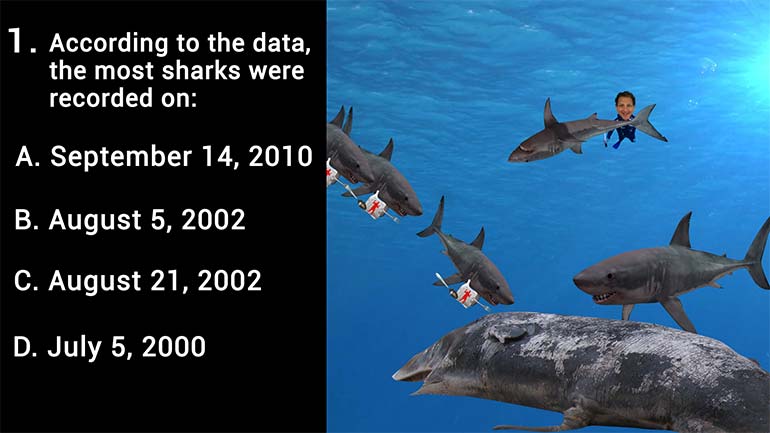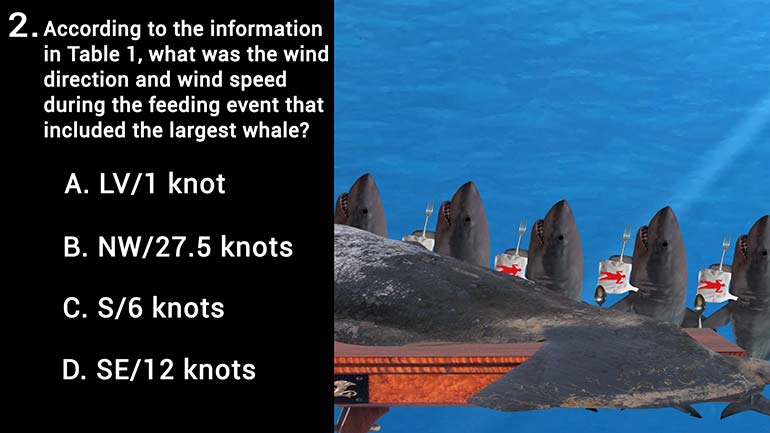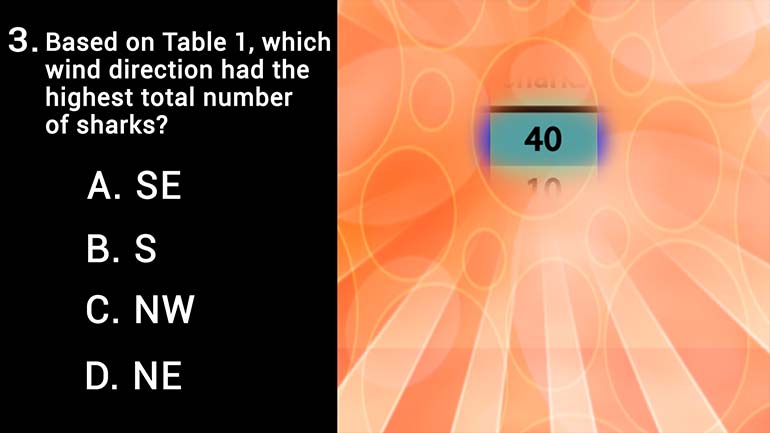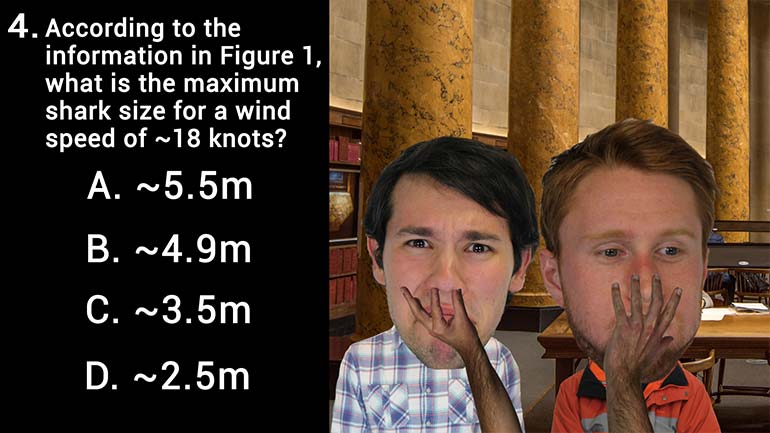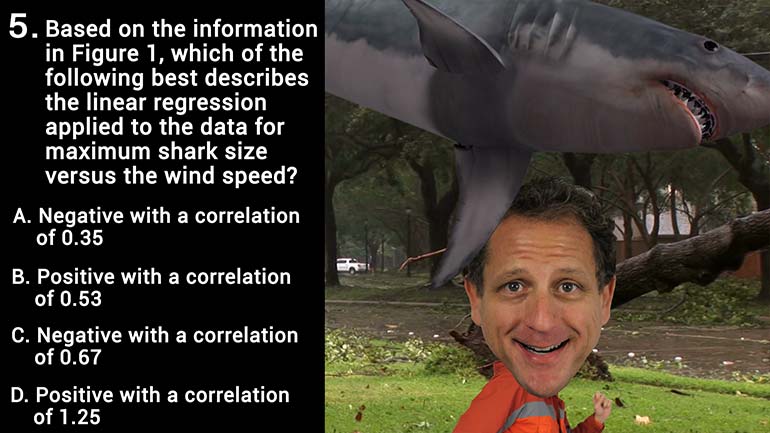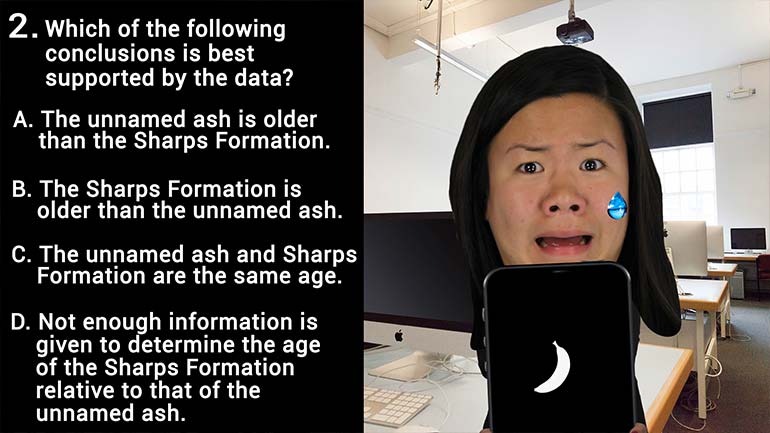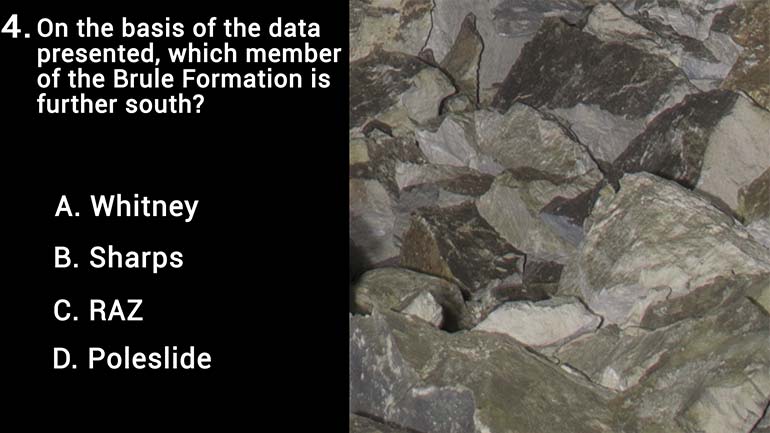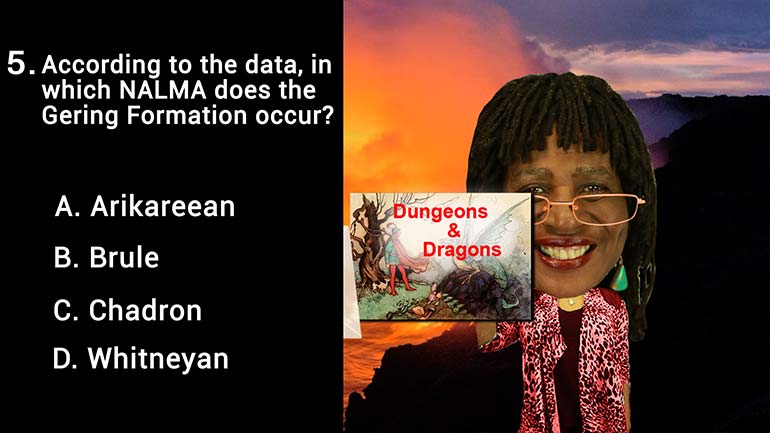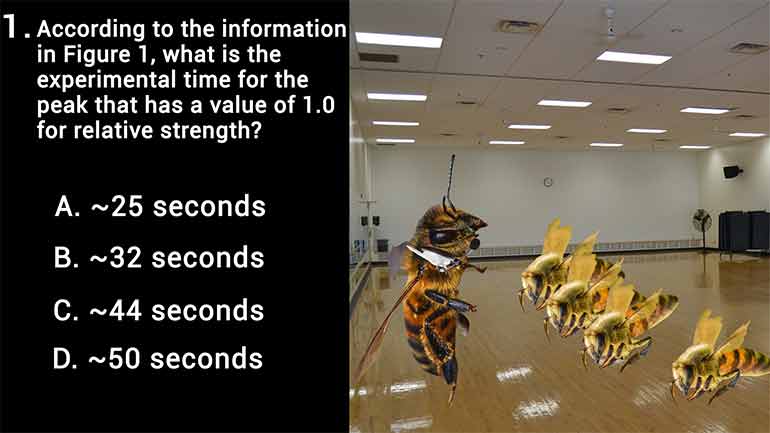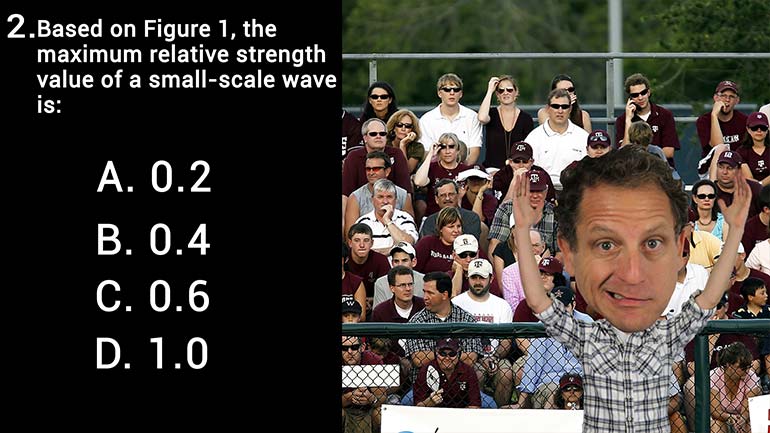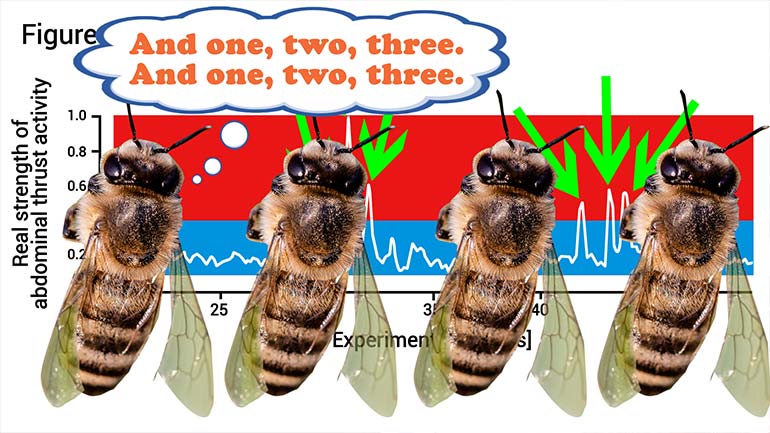ShmoopTube
Where Monty Python meets your 10th grade teacher.
Search Thousands of Shmoop Videos
Data Representation Videos 15 videos
According to the data, the most sharks were recorded on:
According to the information in Table 1, what was the wind direction and wind speed during the feeding event that included the largest whale?
Based on Table 1, which wind direction had the highest total number of sharks?
ACT Aspire Science: It's The Bee's Knees 1 Views
Share It!
Description:
According to the information in Figure 1, what is the experimental time for the peak that has a value of 1.0 for relative strength?
Transcript
- 00:00
Yeah Oh maur science Allah shmoop sorta all right Well
- 00:08
giant honey bees really put the power in numbers idea
- 00:12
good used by moving their bodies in a timely fashion
- 00:16
called shimmering to repel predators such as hornets giant honeybees
- 00:20
nest in the open meaning that their bodies are exposed
Full Transcript
- 00:23
on the outside of the nest Well the idea is
- 00:26
that when a hornet approaches a patch of bees begins
- 00:30
the social event by pitching their abdomens upwards They do
- 00:33
that at the Green Bay Packer games too If you
- 00:36
look close other neighboring bees quickly join in and spread
- 00:39
the wave of action across the nest Figure one right
- 00:43
here shows the relative strength of abdominal thrust activity versus
- 00:47
experimental time While a predatory wasp is in front of
- 00:51
the nest No small scale waves are in the blue
- 00:54
area and big scale waves there in the red area
- 00:57
All right now down to figure to right here That
- 00:59
shows the number of shaking bees per frame versus experimental
- 01:03
time The velocities and distances air split into different classes
- 01:08
A class one distance is closest to the nest and
- 01:11
a class five distance is farthest from the nest wealth
- 01:14
velocity is split into eight classes with class one being
- 01:18
the slowest in class Eight being the fastest Well the
- 01:21
closer the hornet the higher the wave strength and the
- 01:24
faster the hornet flies past Annette the higher the wave
- 01:27
strength for the wave strength is controlled by number of
- 01:31
shaking bees I eat the higher number of shaking bees
- 01:34
The stronger of away right makes sense Okay So And
- 01:38
then here's some detail on figure one kind of skin
- 01:40
that if you want right then figure to when the
- 01:44
bees and the birds and whatever Alright that's actually a
- 01:46
different course Okay one according to the information and figure
- 01:51
one What is the experimental time for the peak that
- 01:54
has a value of one point zero for relative strength
- 01:58
All right figure while I check this out Okay People
- 02:03
forget five minute abs These bees have their ab workout
- 02:07
down Teo Well fifty seconds and figure one The vertical
- 02:11
axis of the graph shows the relative strength or rather
- 02:14
the intensity at which the bees are thrusting their abs
- 02:18
relative to how hard they could be working Thiss graph
- 02:21
goes upto one point zero because while this would be
- 02:23
the max intensity that they work at you know during
- 02:26
one of these waves sessions So look for the place
- 02:29
where the white line reaches the top of the graf
- 02:32
or the red zone If we move horizontally along the
- 02:35
graft to the location of the highest peak well then
- 02:38
we see that this peak lines up with the experimental
- 02:41
time of about thirty two seconds Yeah we always knew
- 02:44
time was nothing more than an experiment That's it All
- 02:47
right so the answer is B They're right there Thirty
- 02:49
two seconds and we're done the
Related Videos
According to the data, the most sharks were recorded on:
According to the information in Table 1, what was the wind direction and wind speed during the feeding event that included the largest whale?
Based on Table 1, which wind direction had the highest total number of sharks?
According to the information in Figure 1, what is the maximum shark size for a wind speed of ~18 knots?
Based on the information in Figure 1, which of the following best describes the linear regression applied to the data for maximum shark size versus...
